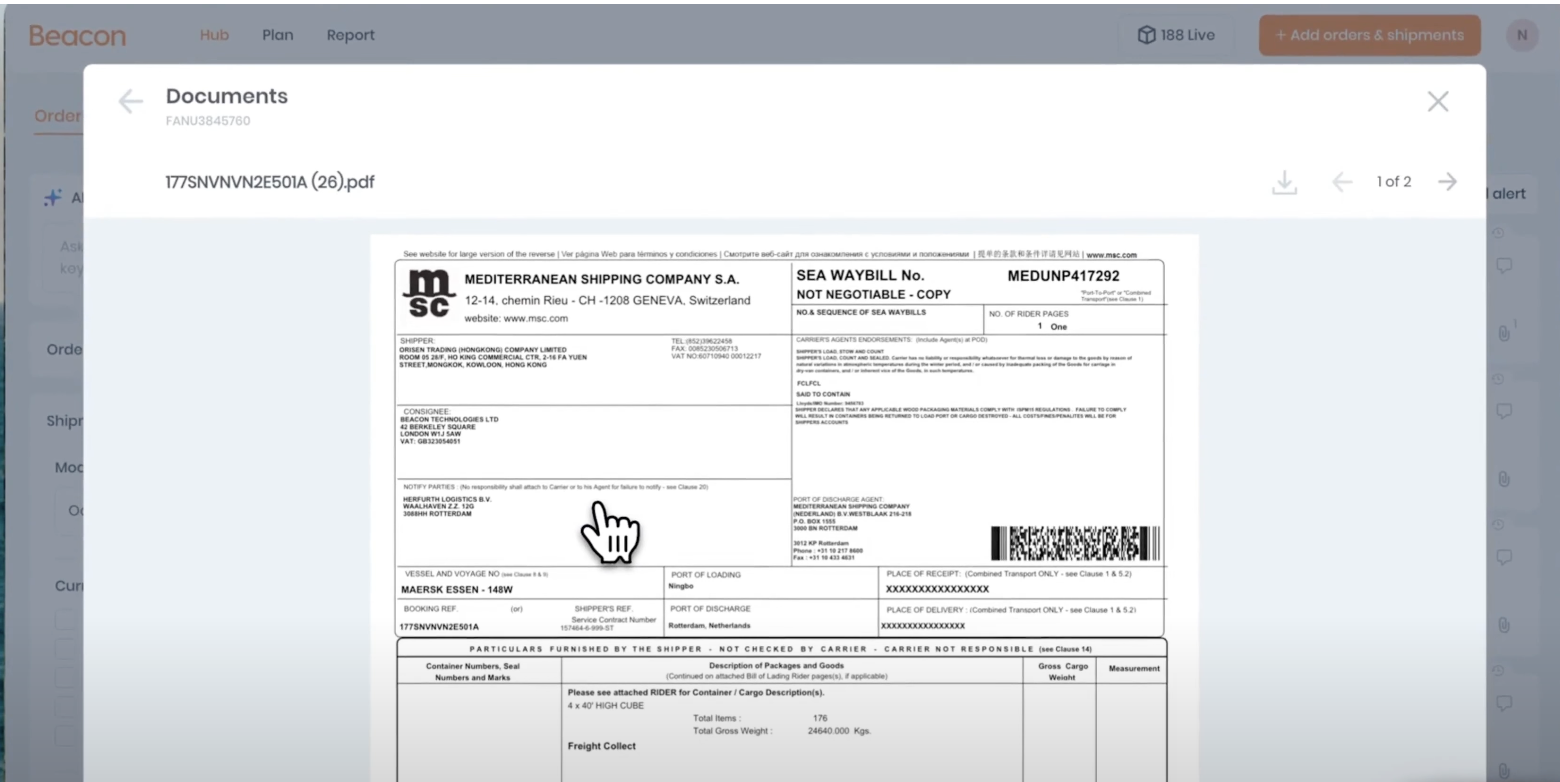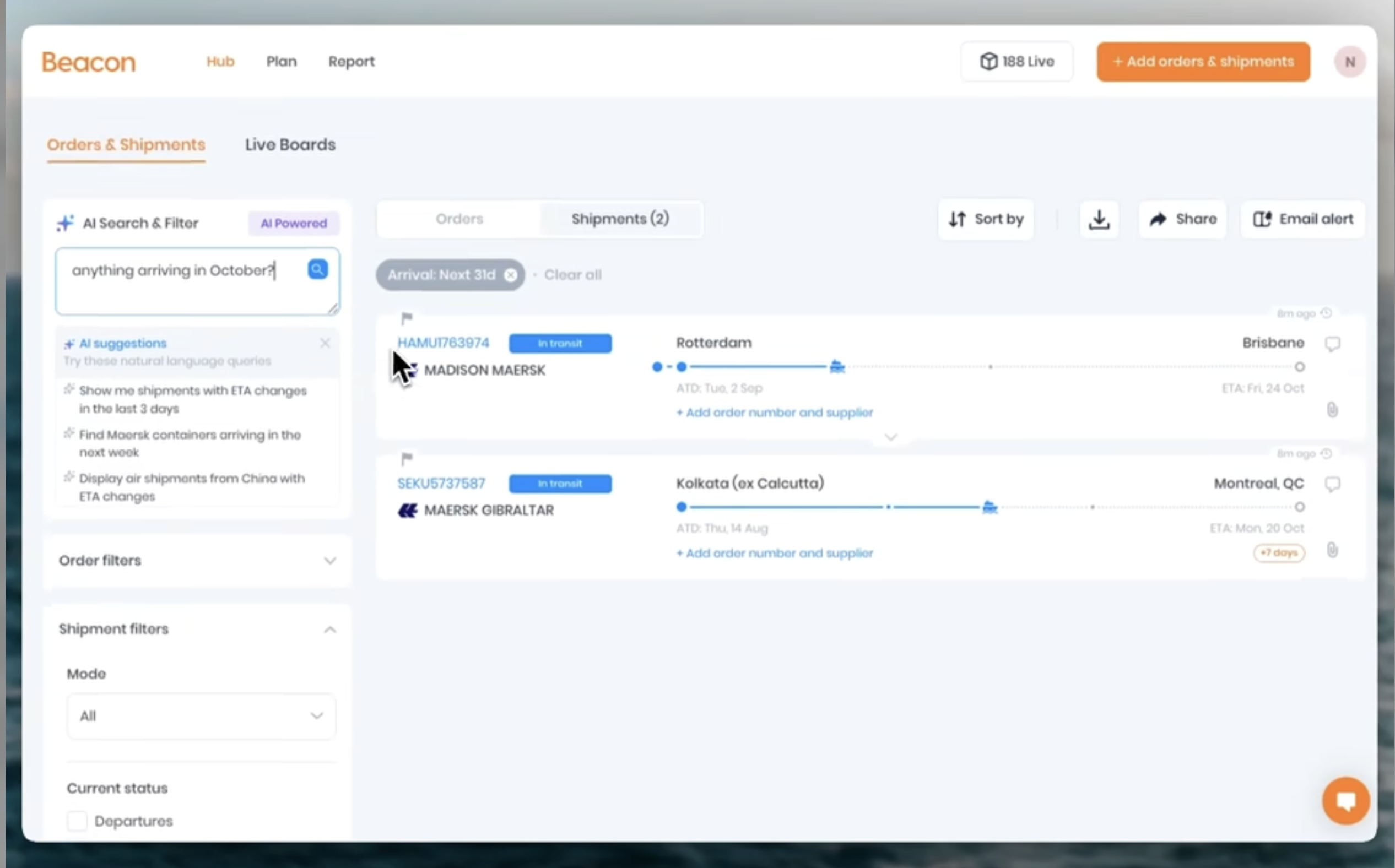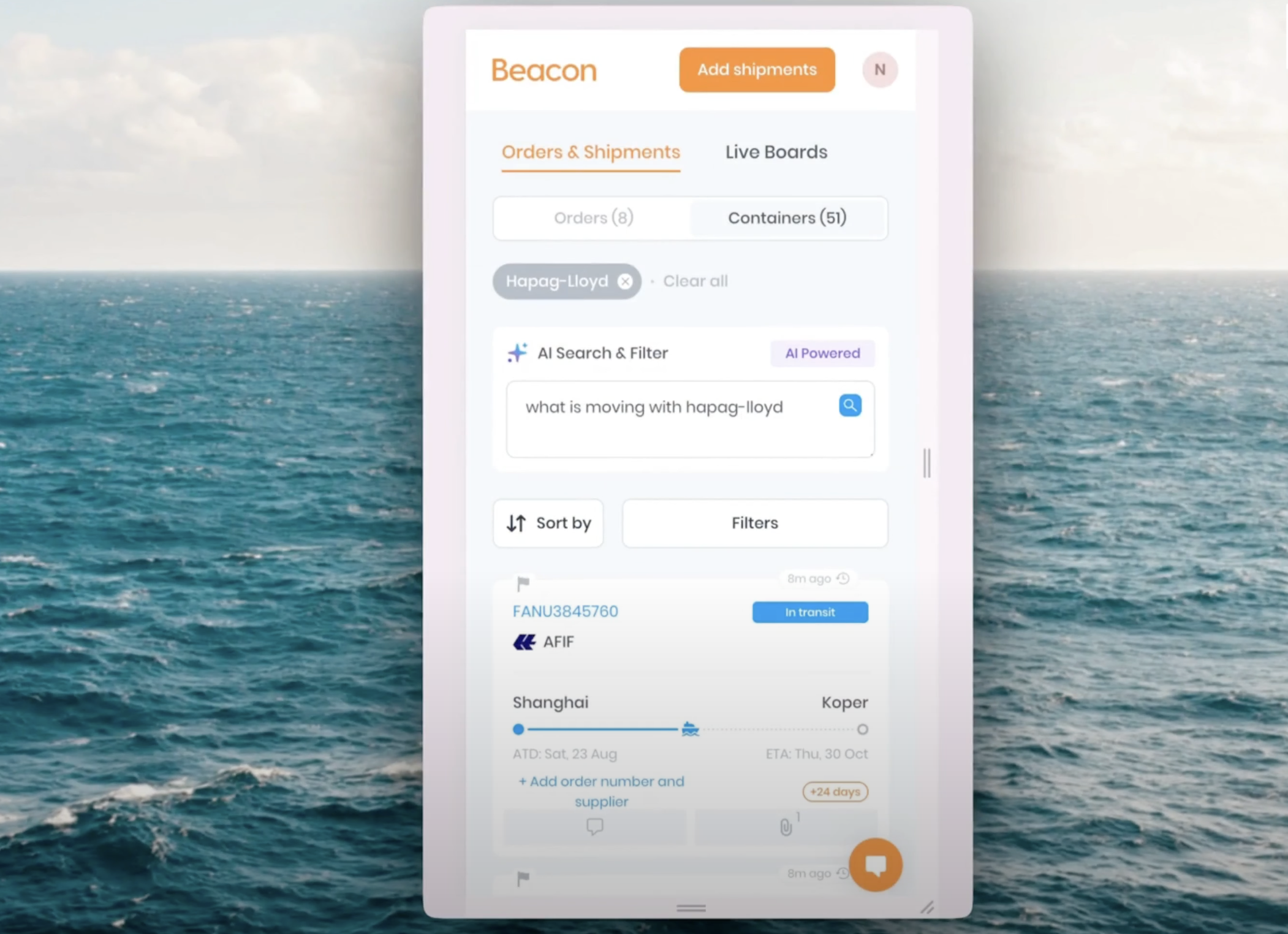A trade lane (or trade route) refers to a specific pathway along which goods are transported between two or more locations, typically across international borders. Trade lanes are established based on the flow of goods and the economic relationships between countries or regions. They encompass both maritime and air routes and play a crucial role in global supply chains by facilitating the movement of goods and fostering international trade.
Transit time refers to the duration it takes for goods or shipments to travel from their origin to their destination. It is a crucial metric in supply chain and logistics management, as it directly impacts delivery schedules, inventory levels, and customer satisfaction. Transit time encompasses the entire journey of a shipment, including transportation, handling, and processing at various checkpoints along the route.
Transloading refers to the process of transferring goods or cargo from one mode of transportation to another, typically from one type of truck or railcar to another, or from rail to truck and vice versa. This logistical practice is often employed to optimize transportation routes, reduce costs, and improve overall efficiency in supply chain operations.
A Transportation Management System (TMS) is a specialized software solution designed to streamline and optimize transportation and logistics operations within supply chains. It provides functionalities to effectively manage and control the movement of goods from origin to destination.
Transportation lead time refers to the duration it takes for goods to be transported from the point of origin to the final destination. It encompasses the time required for transportation activities, including loading, transit, and unloading, across various modes of transport such as road, rail, air, or sea.
A transshipment is the process of transferring goods from one transportation vehicle or vessel to another during their journey from origin to destination. It typically occurs at intermediary points along the supply chain route, where cargo is transferred between different modes of transportation, carriers or vessels.
Twenty-foot Equivalent Unit (TEU) is a standard unit of measurement used in the shipping industry to quantify the cargo-carrying capacity of container vessels. It represents the volume of a standard twenty-foot-long shipping container.
An Ultra Large Container Vessel (ULCV) is a massive container ship used on major trade routes, capable of carrying over 14,000 TEUs.
Vendor Managed Inventory (VMI) is a supply chain management strategy where the supplier or vendor takes responsibility for managing the inventory levels of their products at the customer's or retailer's location. In this arrangement, the vendor monitors the inventory levels based on agreed-upon criteria such as sales data or inventory levels, and initiates replenishment as needed.
Verified Gross Mass (VGM) is a term used in the shipping industry to refer to the total weight of a packed container, including its contents and packaging materials. It is a crucial requirement mandated by the International Maritime Organization (IMO) under the Safety of Life at Sea (SOLAS) convention to enhance safety in maritime transportation.
A floating structure with its own mode of propulsion designed for the transport of cargo and/or passengers. In the Industry Blueprint 1.0 "Vessel" is used synonymously with "Container vessel", hence a vessel with the primary function of transporting containers.
A vessel sharing agreement (VSA) is a cooperative arrangement between shipping companies that allows them to share space and resources on vessels for specific routes.
Vessel bunching refers to the situation where multiple vessels arrive at a port simultaneously or within a short period, leading to congestion and delays. This clustering of vessels can overwhelm port facilities, causing extended wait times for berthing, loading, and unloading operations.
A vessel call sign is a unique identifier assigned to a ship for radio communication purposes. It is used to distinguish the vessel from others in maritime communication systems, including VHF radios and satellite communications.
A vessel omission (sometimes called a port omission) occurs when a scheduled vessel does not call at a planned port during its voyage. This disruption means that the vessel skips the port entirely, which can impact the transportation and delivery schedules of goods.
In cargo shipping, vessel rotation is the planned sequence of port calls that a shipping vessel follows on its route to optimize cargo loading and unloading operations.
The timetable of departure and arrival times for each port call on the rotation of the vessel in question.
A journey by sea from one port or country to another one or, in case of a round trip, to the same port.
Warehouse utilization is a logistics metric that refers to the effective use of available warehouse space for storing goods and inventory.
Order for specific transportation work carried out by a third party provider on behalf of the issuing party.
Logistics yard management refers to the process of overseeing and controlling the movement of trucks, trailers, containers, and other vehicles within a yard or distribution center. This includes tasks such as scheduling, tracking, and coordinating the arrival, departure, and storage of these vehicles.
-min.png)
Beacon Insider: September
Welcome to the second installment of Beacon Insider! We've been hard at work throughout September bringing you exciting new features and improvements to make your shipment tracking experience even better. Here's everything you need to know about what's new.
30-Day Free Trial with Unlimited Shipments
We've completely revamped our free trial offering to give you more time and flexibility to explore everything Beacon has to offer. You now get a full 30-day free trial with unlimited shipments, add as many ocean and air shipments as you need throughout your trial period.
Introducing Pay by Card
When your trial ends and you're ready to commit, we've made purchasing easier than ever. You no longer need to reach out to our sales team to get started. Simply:
- Choose your preferred plan
- Select the number of credits you need
- Enter your card details
- Start tracking immediately
All plan details and pricing are available at beacon.com/pricing. Of course, if you prefer to speak with our sales team, that option is still available—just use the booking link on our website.
In-Platform Document Viewer
This might seem like a small change, but it makes a big difference to your daily workflow. Previously, viewing documents meant downloading them first, an extra step that slowed you down. Now, simply click on any document to view it directly in the platform. No downloads, no extra windows, just instant access to your shipping documentation.

AI-Powered Search and Filters
This is the feature we're most excited about. While Beacon has always offered comprehensive filtering options to help you analyze your data from every angle, we know that navigating multiple filters can sometimes feel overwhelming.
Introducing AI search and filters: Simply type what you want to see in plain English, and Beacon will automatically apply the correct filters for you.
Want to see shipments arriving in October? Just type it. Need to view all shipments moving with a specific carrier like Hapag-Lloyd? Type that in. Our AI understands your intent and delivers the exact results you're looking for, saving you time and making data analysis effortless.

Enhanced Mobile Experience
For users who need to track shipments on the go, we've significantly improved the mobile experience. Adding and viewing shipments from your phone or tablet is now much more intuitive, with an interface that mirrors the desktop platform you already know and love, just optimized for smaller screens.
Whether you're checking on a shipment during your commute or quickly adding tracking information while away from your desk, the mobile experience is now seamless and efficient.

Get Started Today
We're thrilled to bring you these updates and hope they make your Beacon experience even more valuable. If you have questions about any of these new features or need assistance getting started, don't hesitate to reach out to our team.
Ready to experience the new Beacon? Start your 30-day free trial today.
See you next month with more exciting updates!

%20(1).png)
.png)

